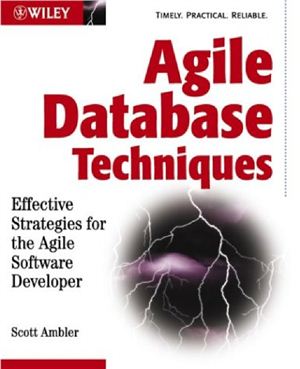New York: John Wiley & Sons, 2003. – 374 pages.
This book is organized into four parts. The first part sets the foundation by describing the fundamental skills and philosophies that all IT professionals require to be effective at data-oriented activities. The second part describes techniques that enable evolutionary database development, showing that it is possible to take an iterative and incremental approach to data-oriented development. The third part provides an overview of detailed implementation techniques for effectively using object technology, relational database technology, and XML (Extensible Markup Language) technology together. The fourth part wraps up with a discussion of how to successfully adopt the concepts described in this book.
See this book in Chinese: http://www.twirpx.com/file/719351/
This book is organized into four parts. The first part sets the foundation by describing the fundamental skills and philosophies that all IT professionals require to be effective at data-oriented activities. The second part describes techniques that enable evolutionary database development, showing that it is possible to take an iterative and incremental approach to data-oriented development. The third part provides an overview of detailed implementation techniques for effectively using object technology, relational database technology, and XML (Extensible Markup Language) technology together. The fourth part wraps up with a discussion of how to successfully adopt the concepts described in this book.
See this book in Chinese: http://www.twirpx.com/file/719351/

